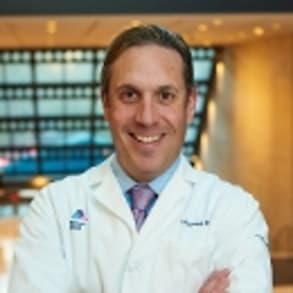Mount Sinai is at the cutting edge of interventional radiology. This short video provides an excellent overview of PAE using the radial artery as an access point to block blood flow to the prostatic arteries, resulting in a reduction in the size of the prostate over time. The patient leaves several hours after the procedure is completed with mild pain generally controlled with over-the-counter analgesics. 80% of patients have a radically positive response to PAE.
it's actually very common for men as they age to suffer from BPH or enlargement of the prostate. If we're living to be longer, I think almost everybody is going to experience some symptoms of BPH. We're very excited about offering a minimally invasive treatment for BPH here at Mount Sinai mm hmm. Prostate artery embolization is a same day procedure patients typically will come in in the morning and get evaluated and the procedure itself takes about two hours. We learned many years ago that the radio artery in the wrist is actually a safer approach for people undergoing minimally invasive procedures as compared to the artery in the groin. Using a small pinhole in the wrist, we will block blood flow to the prostatic artery that flows to the prostate, which over time will help shrink the prostate and relieve the symptoms that these patients are experiencing. There's less risk of bleeding. The patient will go home several hours after the procedure with very mild medication to control some of their symptoms. Most people go home with no symptoms at all and I typically will see them in four weeks after the procedure to see how their symptoms are. Typically, if men have symptoms of BPH, they consult with the urologist. I work very closely with the urology team here and we decide together if patients are candidates for a minimally invasive approach. Mount Sinai is really at the cutting edge of interventional radiology. Not that long ago. The specialty was started here by a pioneer in our field and we've continued on in that tradition over the years. About 80% of men respond dramatically to the procedure that we do. I think it's very exciting to be able to offer somebody a treatment for a disease that they have that they were unable to find elsewhere.



